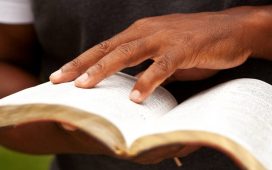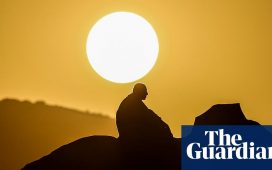When I am on deadline, nothing yet defrosted for dinner, and the washing is hanging on the clothesline in the rain, I find it hard to connect to my inner goddess. If I turn to the internet for advice, I’m presented with yet another to-do list.
To embrace my goddess self, I must love myself, eat healthy, exercise, take a milk bath, wear flattering-yet-practical clothes, adorn my hair with floral wreathes and fix its frizziness with an avocado. I must use “natural looking” makeup, maintain a healthy skincare regimen, always be kind yet assertive, lead by inspiring …
But surely the aim of goddess spirituality is not to create yet another test for women to fail?
Western women began to invoke goddess traditions in the 19th and 20th centuries, alongside the political battle for women’s rights. Influential US thinkers and writers, including Starhawk and Zsuzsanna Budapest, fused pagan beliefs in the sacredness of nature with feminism, reclaiming the “witch” as a symbol of strength and feminine power.
If you want to be a modern goddess adherent, you don’t have to replace your wardrobe or start a new skincare regime. According to the feminist theologian Tea Nicolae, the goddess movement is typified by seeking succour from female deities, caring for nature and taking political action.
There is a panoply of goddesses to choose from.
In the west, Greek goddesses including Athena and Aphrodite are popular, along with Hindu goddesses such as Lakshmi and Kali. Goddess practitioners pray to these deities according to their specific portfolios. For example, you might pray to the Hindu goddess of creativity, Saraswati, if you are, say, struggling with filing your articles on time, or the Greek goddess Demeter, if you are having differences of opinion with your teenage daughter.
It’s crucial that, when engaging in goddess practices, we do not simply culturally appropriate these figures.
For example, if you buy a statue representing the Hindu goddess Kali, before you start asking her for help it might be a good idea to read a little about her mythology. Perhaps take an online course looking at feminist readings of sacred Vedic texts. Maybe donate to micro-finance banks supporting women’s businesses in south Asia. In other words, when we draw on the rich spiritual symbolism of other cultures, we must be careful to do so respectfully, and give something back.
Goddess spiritual practices are many and varied. You could try prayer, ceremony, meditation, ecstatic dance, tarot, mirror gazing, witchcraft, journalling and affirmations. Understanding seasons and the cycles of the moon also help goddess practitioners to be more at home in the natural world. Reverence and care for nature is a common thread, with nature sometimes seen as the embodiment of the mother goddess.
The goddess movement offers deities that people of all genders might identify with. For example, according to the antiquities scholar Mary Beard, the Greek goddess of wisdom and war, Athena, lies somewhere between male and female, born from the head of Zeus, and possessing traditional female and male attributes. The Mesopotamian goddess Inanna (also known as Ishtar) had characteristics of both genders; sacred images from the 19th-century Luba kingdom (now in the modern-day Democratic Republic of Congo) possessed male and female genitalia; and the Hindu god Shiva is sometimes represented as Ardhanarishvara, with female and male body halves.
after newsletter promotion
The goddess movement has been criticised as ahistorical, and followers have been accused of presenting Neolithic and Paleolithic human societies as matriarchal. But as the religious scholar Charlene Spretnak once observed, no one is interested in revering a “Yahweh in a skirt”.
Goddess practitioners do not seek to replace patriarchy with its opposite. The aim is to remove traditional religious hierarchies and boundaries, recognising that all beings are interconnected.
Starhawk explains that for her, “the heart of my connection to the Goddess has less to do with what I believe happened 5,000 years ago or 500 years ago, and much more to do with what I notice when I step outside my door: that oak leaves fall to the ground, decay and make fertile soil”. She observes that appreciating the sacredness of nature must also lead to action. “I approach this everyday miracle with a sense of awe and wonder and gratitude.” In “very practical terms [this means that] I compost my own garbage”.
Numerous goddess followers engage in community service – climate activism, women’s rights campaigns, support for survivors of family violence. They understand that, as the Christian Saint Teresa of Ávila once said of her god, the mother goddess has no hands but our own.
-
Jackie Bailey is the author of The Eulogy, winner of the 2023 NSW premier’s literary multicultural award. When she is not writing, Jackie works as a funeral celebrant, helping families navigate death and dying. This article draws on her forthcoming nonfiction book about spirituality for the non-religious







